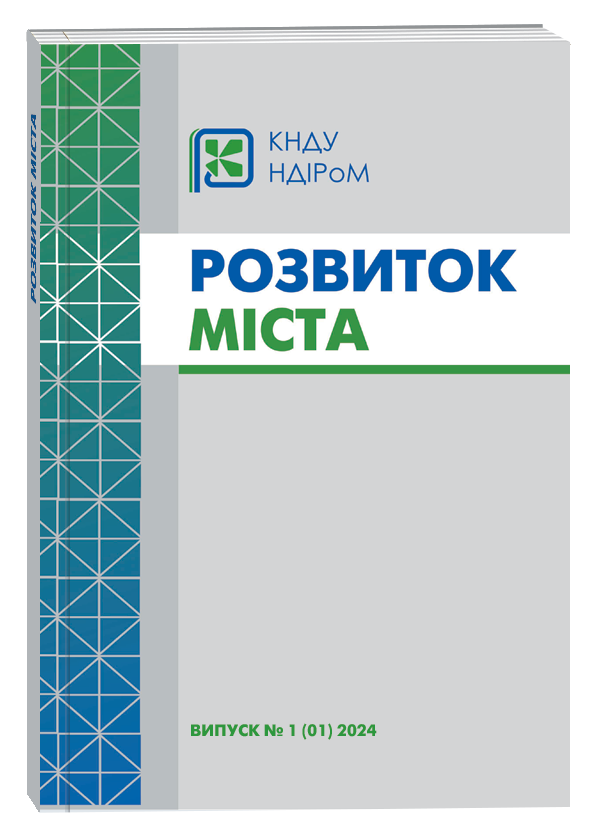REVITALIZATION OF UKRAINE SHIPBUILDING ENTERPRISES: CURRENT FOREIGN CASES
DOI:
https://doi.org/10.32782/city-development.2024.1-11Keywords:
cities, economy, industry, shipbuilding, industrial heritage, revitalizationAbstract
The purpose of this article is to clarify the essence of revitalization as an effective method of attracting the potential of business recovery or alternative use of the sites of seaside cities freed from industrial activity in the interests of urban territorial communities. Emphasis is placed on shipbuilding enterprises, given their location along the picturesque shores of seas and rivers, on the one hand, and their important city-building mission, on the other. The method of research was the analysis of foreign cases, which highlight the experience of solving the problem in countries where shipbuilding after the Second World War and the Cold War, as well as due to the intensification of competition on international markets, suffered a total collapse. We are talking about the United States of America and the countries of the European Union. The key strategies used by regional authorities the public and investors to enhance the attractiveness of the respective locations and renew urban ecosystems have been identified. It has been proven that Ukrainian shipyards are not much different from those whose history was in the center of our attention. Those that were in state ownership did not hold their positions in the competitive confrontation, had huge surplus areas, archaic management that did not differ in originality of thinking and constructivism. Having studied the relevant cases, the authors were convinced that, regardless of any of them, the path to success lies through the combination of the revitalization use of former shipbuilding industry facilities with the driving forces of supporting local industries and other types of economic practices. They are at the sometime attractive for new generations of businessmen and for independent visitors – citizens, tourists and people of liberal professions (artists, in particular). It was emphasized that in the EU, the question of bringing into the field of useful use at least a part of industrial objects, which were outside of business-processes, is subject to institutional norms that regulate the preservation of industrial heritage. They create the basis for implementing revitalization programs that meet the needs of all stakeholders.
References
Dümcke W. and Vilmar F. Kolonialisierung der DDR: kritische Analysen und Alternativen des Einigungsprozesses (The Colonisation of the GDR: critical analyses and alternatives to the unification process), Agenda, Münster, 1996. 360 р. URL: https://www.pw-portal.de/themen/kolonialisierung-der-ddr_1517
Shipbuilding Industry Adjustment and Revitalization Plan. Guo Fa. 2009, № 21. URL: https://members.wto.org/CRNAttachments/2014/SCMQ2/law19.pdf
Limas-Villers Н. Improving the Shipbuilding Industrial Base. NDIA`s Dusiness & Technology Magazine, 2022. URL: https://www.nationaldefensemagazine.org/articles/2022/1/21/improving-the-shipbuilding-industrial-base
Tenold S. The Declining Role of Western Europe in Shipping and Shipbuilding, 1900-2000, р. 9-36 Petersson N. P et al. (eds.), Shipping and Globalization in the Post-War Era, Palgrave Studies in Maritime Economics. Springer Nature, 1919, 219 р. URL: https://doi.org/10.1007/978-3-030-26002-6_2
Clark M. U.S. Navy Shipyards Desperately Need Revitalization and a Rethink. The Heritage Foundation. 2022. URL: https://www.heritage.org/defense/report/us-navy-shipyards-desperately-need-revitalization-and-rethink
McElroy S. Onsite and Online Historical Tour of Hunter's Point/Shipyard Area. URL: https://www.sfheritage.org/research/hunterspoint/
History of the Lorain shipyards. URL: https://www.theshipyards.com/history
Brooklyn Navy Yard. URL: https://www.brooklynnavyyard.org/mission/
Reducing emissions from the shipping sector. European Commission, 2024. URL: https://climate.ec.europa.eu/eu-action/transport/reducing-emissions-shipping-sector_en
Ооst M.V. Laatste scheepswerf van België maakt doorstart als groene pionier. WDP, 2023. URL: https://www.tijd.be/ondernemen/transport/laatste-scheepswerf-van-belgie-maakt-doorstart-als-groene-pionier/10503546.html
Potier M. Le Chantier Naval Meuse et Sambre devient Batia Mosa. Prom Andenne. 2023. URL: https://www.promandenne.be/le-chantier-naval-meuse-et-sambre-devient-batia-mosa/
The European Cultural Heritage Green Paper. 2021. URL: https://www.fondazionescuolapatrimonio.it/wp-content/uploads/2021/03/European-Cultural-Heritage-Green-Paper_Executive-Summary.pdf
European Quality Principles for EU-funded Interventions with potential impact upon Cultural Heritage. International Council on Monuments and Sites. 2018. URL: https://openarchive.icomos.org/id/eprint/2083/6/European_Quality_Principles_2019_EN_OK.pdf
Leeuwarden Declaration on Adaptive Reuse of the Built Heritage: Preserving and Enhancing the Values of Our Built Heritage for Future Generations. 2018. URL: https://www.ace-cae.eu/uploads/tx_jidocumentsview/LEEUWARDEN_STATEMENT_FINAL_EN-NEW.pdf
Lorens P., Bugalski L. Reshaping the Gdańsk Shipyard – The Birthplace of the Solidarity Movement. The Complexity of Adaptive Reuse in the Heritage Context. Sustainability, 2021, Vol. 13 (13). DOI: https://doi.org/10.3390/su13137183



